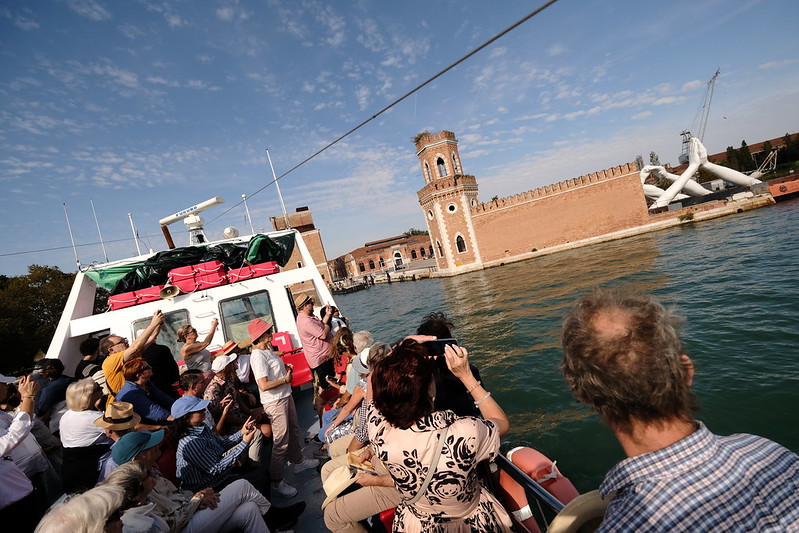As the perimeter of the island Lazzaretto Nuovo sinks gradually into the original Venetian lagoon, visitors are treated to one of Venice’s most unusual habitats: the Lagoon’s salt marshes or barene (from the Venetian dialect “baro”: bush/fallow). On 30 September, participants in the European Cultural Heritage Summit 2023 had the opportunity to join the study tour “Venice Lagoon – Off the Beaten Path” to explore this ecosystem, guided by representatives of the Lazzaretti Veneziani project, led by the Ekos Club and the Venice Chapter of the Archeoclub d’Italia.
This study tour was organised in the framework of the European Heritage Hub project co-funded by the European Union, with the goal of contributing to reflection on the vital interaction between climate change/action and Europe’s cultural and natural heritage. It also confirmed Europa Nostra’s ongoing interest in and concern for the safeguard of the Venice Lagoon. In 2016, Europa Nostra, together with the European Investment Bank, declared the Venice Lagoon as THE most endangered heritage site in Europe.
As participants learned, coastal brackish lagoons like the Venetian lagoon are precarious habitats, constantly balancing between erosion and sedimentation, ever moulded by the action of currents and rivers. Indeed, without any human intervention, the Venetian lagoon would have already been naturally filled by sediment. Historically, humans have worked counter to this natural trend, intentionally slowing and reversing it, starting in the 1300s when the Serenissima began diverting rivers to prevent their sediments from burying the Lagoon. However, in the last one hundred years the construction of dams, excavation of deep canals, and the waves caused by intense navigation have caused a dramatic increase in erosion. These factors are aggravated by impacts of climate change, including sea level rise.
Today, only one quarter of the natural barene are left. The health of this remnant serves as an important litmus test of the relationship between humans and nature and an indicator of the status of efforts to reverse the progressive destruction of Venice’s environment and the social and productive fabric it supports. Participants in the Study Tour heard about these state-funded efforts, including work to protect existing barene and restore lost ones, before setting out on the Island’s “Path of the Barene” hiking trail. They were also treated to an overview of Lazzaretto Nuovo’s fascinating medical and naval history – which among other things has given the world the words “quarantine” and “lazzaretto.”
The study tour was expertly led by Ing. Pierpaolo Campostrini, the Director General of Corila, the Consortium for coordination of research activities concerning the Venice lagoon system.
The #EuropeanHeritageSummit lagoon tour also visited Lazzaretto Nuovo island, home to rich cultural & medical heritage & gateway to the extraordinary Barene laguna marinescape & ecosystem, at risk from climate change 🌿 #natureculture #climateheritage pic.twitter.com/EJ9KuYkYzR
— European Heritage Hub (@EurHeritageHub) September 30, 2023
Tour participants also paid a remarkable visit to the Arsenale of Venice, where they heard from representatives of the Consorzio Venezio Nuova and the engineering firm Thetis, which helped build and operate the world-famous MOSE. The MOSE system includes a series of barriers consisting of mobile gates located in lagoon inlets which are designed to isolate the Lagoon from the Adriatic Sea during high tide events. It compliments other flood control interventions, including five metre-long, 1.3 metre-high, ultra-transparent glass barriers which have recently been erected around St Mark’s basilica.
The Arsenale visit showed the unique technological innovations that are being deployed in efforts to defend Venice while also inviting participants to consider the limits of local adaptation in the face of the global phenomenon of human-caused climate change. Discussions during the Arsenale visit also touched on the issue of maladaptation, as the increasing frequency with which the MOSE systems will be deployed threatens to alter the tidal nature of the Lagoon, potentially impacting its natural and cultural values.





